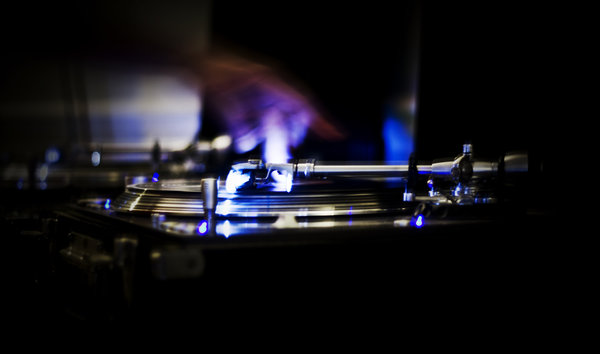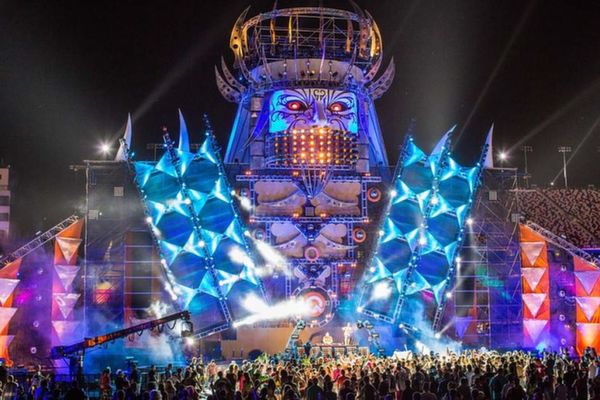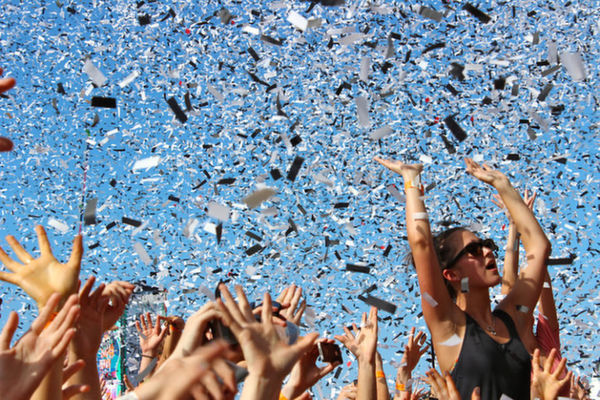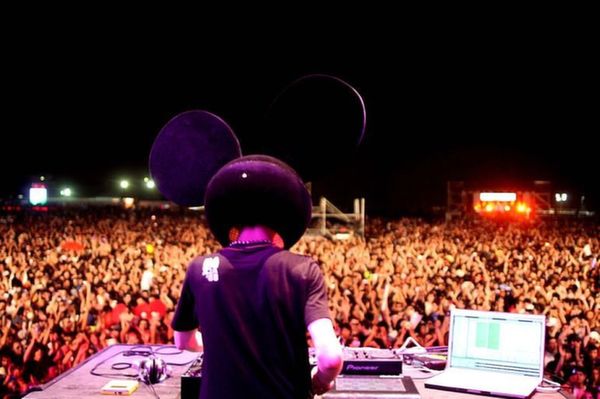The difference in sound between vinyl, CD and digital formats can be anything from minor to substantial depending on numerous variables. Which one is the best? Purists will stand by the warm sound of vinyl like true soldiers, while a good part of the new generation loves how digital files can make the life of a DJ a lot easier. But ultimately, it's up to you – it's truly a matter of subjective preference. Let's have a look at what defines each of these formats and how we feel they compare to each other.

Digital / Lossless formats: FLAC vs WAV
Lossless audio formats like FLAC are kind of like a ZIP for audio. When you ZIP a file, the resulting document is smaller than the initial file, and that's why we call it compressed. And when you extract it, you get the same file back. How does that work? It has been analyzed for repeating patterns so it can be saved in an optimised way. So what happens is, when you compress CD quality audio into a FLAC file, the resulting file is generally around a third smaller, but if you extract the audio out again, you will get the exact same audio file, with no data lost along the way. Although when people mention lossless audio formats they usually mean compressed formats like FLAC, WAV is also a lossless format.
So is it better to use FLAC or WAV? Well, WAV files are pretty big. Normally twice the size of FLAC. Also, they have no standard tagging system to mark he title and artist of the track, which means you need extra care when naming your file. Moreover, WAV files have no built-in error checking: if the file is corrupted you will hear the problem when playing the track, with no warning – while FLAC files have a check to make sure the file has not been corrupted.
On the other hand, WAV is supported my most software and devices, which can bring you a bit peace of mind - and a hassle-free DJing experience. Also, because this file type is not compressed, playing it won’t use up any extra processor power to decompress it. Some will tell you to skip FLACs altogether and just use WAVs. Unlike a FLAC, which has been squished down, a WAV file is an uncompressed representation of what the artist recorded in the studio. By buying WAVs, you can avoid the potential data loss incurred when the file is compressed into a FLAC - this data loss is rare, but it can happen.
So at the end of the day, if you want a perfect, infallible sound, we would recommend keeping all your tunes archived in a compressed format like FLAC. That way you can protect them against corruption, you can have them neatly tagged, and you will save a whole lot of file space. When taking tunes to a club, you can always extract your playlist to WAV or rip them to CD if you are worried about compatibility.
Digital / MP3
If you're playing out in a club, lossy formats like MP3 can lack punch, definition and clarity when compared to the original source – but if you use them 320 kps versions, made with a good codec, it's very unlikely that anyone will actually hear any difference. Keep in mind, though, that it also depends on the club system - some of the best sound systems really can sound amazingly transparent and revealing.
What has given digital DJs a bad name is those who play low rate files they have downloaded from torrent sites, as well as the many 320s out there that have been poorly ripped from vinyl or made using poor codecs. But if you 320s straight from major digital shops like Beatport, Juno and such, the track's quality won't be compromised, providing the tune was produced and mastered properly in the first place. They can be clearer than vinyl in some cases (no dust, no slightly worn needles, no flutter from the turntable, etc). For absolute crispness and clarity though, we do recommend lossless formats if you're playing digital.
Vinyl
As much as it's seen as a state-of-the-art format, the sound that you can get out of a vinyl record still depends on a number of variables. First and foremost, there's the source material - the tracks the artist laid down in the studio, and what medium they used to record. Was it analog tape? Then a vinyl pressing of that piece of music will probably sound better than a CD. Was it a laptop recording at 24 bits? Then a lossless digital file can equal the quality of the source. Second, how good is the pressing? A clean, 200-gram vinyl record sounds much superior to a thinner disc, even if the exact same source material is used. Third, there's the equipment in which your record will be played. How good is it? Think PA and mixer, but also the condition of your needles and turntables.
There's much discussion about a certain warmth, a quality only attained when playing music on vinyl. The truth is, analogue formats have a wider frequency range, which while inaudible to the human ear, do affect other sounds that we can hear. this is why vinyl has a warmer sound than you would get playing the same track from a WAV or FLAC file. In all honesty, given the perfect conditions vinyl will very likely sound better than pretty much any digital medium, even if just marginally.
How they all compare in the real world
Don't be scared though – we can safely say that as long as the tunes are well made and appropriate for the crowd, the people will dance with equal vigour regardless of the format you're playing. Just be careful: on large systems, sometimes if a DJ carelessly swaps from vinyl to digital a lot it is noticeable, particularly when they are using MP3. So keep checking the levels and the EQ and you should be fine.
Last but not least
Much of today's electronic music is made on digital platforms, using digital samples that have already had the "inaudible" bits clipped out of them when digitized. So when a track like that is pressed on vinyl, all the missing lows and highs that weren't there to begin with don't magically appear. With rock, classical, anything done by instruments that are actually put to wax before digitizing, its a different story.
But we should stress that mastering the art of mixing is something better achieved through practising with vinyl. Also, it is a classic format that really pays respect to who came before us and taught us the craft. Besides, digging lost crates in record shops is more of an unforgettable experience than browsing for tunes online... So as with all things in life, it's a trade-off. You just need to work out your priorities and go with your preferred format. No fear, just a lot of commitment!
Music festivals are nothing new. In fact, they have been around for ages – Woodstock, anyone? But in recent years, there has been a definite increase in the number of electronic dance music acts – namely DJs – in the line-ups of these uber-popular events. Actually, electronic-music-only festivals are now officially a thing and happen everywhere from the UK to Croatia, Iceland to Miami. This rise of the DJ slot at festivals has provoked a shift in how the general public sees the dance music scene and its artists – and we can't really say they've been witnessing the real face of club culture.

First things first: Festival culture is very different from club culture
Music festivals take genres like techno and house (and, well, dubstep and so-called EDM) ouf of the club landscape and into parks and public spaces. They also shift the timing of the experience from night-time-into-the-break-of-dawn to the afternoon and a perhaps bit of the evening (some festivals do happen well into the am, but...not that many). And as much as music is what matters the most for us, with club culture the experience is heavily linked to an actual club setting, complete with a tight soundsystem, a great VJ or, even better, darkness, and that community vibe where we feel like we're all soldiers repping a (rather underground) cause.
With music festivals it's quite the opposite: the soundsystem may be super loud, but it's not exactly a quadriphonic Funktion One; the park, the giant LED screens, the cake in your face may be all fun and games, but ithey're far from a real club experience – ithey channel a stadium rock type of feeling rather than the intimate vibe you enjoy at a proper club night.
The truth is, the festival trend means that the majority of the new generation would rather shell out hundreds in going to festivals abroad than actually attending real, exciting club nights in their home city – and actually supporting local artists while actually having a taste of what the original club culture is all about.

Line-up quality: underground vs mainstream
We are all for people having a good time, dancing and doing whatever they want, but the trouble with festivals is – where do we draw the line when it comes to quality? For the most part, the DJs that are booked to play in big festivals are not the ones people like us, real lovers of the craft, would ever pick. They are rockstar Djs who top the charts and are a lot more worried about the stage props and laser projections than actually playing quality music using a respectable set of skills (yep, many of them play pre-recorded sets or dumb down their performace to the point of it being about “The drop”).
They are, in reality, bottom feeders of sorts, who thrive on getting people zoned out on wobblers and pitched-down vocals rather than emotion, substance and all those qualities that make music an amazing art form. The typical mainstream EDM stadium DJ does a disservice to club culture by wiping the possibilities for electronic music to be perceived as a thought-provoking genre with cultural relevance and depth. In essence, they contribute to making our culture less credible – and that's beyond frustrating, as DJing and electronic music, as fairly young art forms, have enough challenges to face as it is. Our thought? Bring more underground, respected names to these stages!

The public
What also worries us about the festival craze is that it's breeding a generation of impatient, apathic, drop-thirsty kids instead of informed, passionate music lovers. Club culture is about the journey, about the hours of build-up and the ecstasy of the peak time, when everyone is going strong and the DJ is sweating it out to keep everyone dancing until sunrise. With festivals the DJ has one or two hours to make it all happen, creating a more-is-more atmosphere where bangers are played one after another, creating a rush described by Nina Kraviz on Groove magazine as a massive orgasm. By allowing this to happen again and again, these events are educating their public into thinking that “getting it on” and waving your glow stick is enjoying yourself – when really, what they should be doing if they wated to experience club culture is they should be dancing together to great, carefully selected music for hours and hours.
Another problem is that many of the festival-goers aren't really dance music lovers – they're people who want to go out, listen to super loud, banging tracks and let go of their worries. Which is fine. But what happens then is that they often disrespect real DJs that don't fit their hard-hitting standards, like what happened recently when Jeff Mills stopped playing after being hit by a botttle at a festival in Belgium. Festival promoters need to be careful and know their audience before they make their bookings. If your line-up features Nickelback, the public probably won't like Richie Hawtin, and vice-versa.
(Most) festivals aren't about the music
...They're about the money. There, we said it. Festivals have become a proverbial field day for marketing types, who fill them with brands and clichés about what it's like to have a good time. This means that, to maximise revenue, the promoters are forced to book super mainstream acts, and that extends to the DJ world. So instead of getting the pioneers and the innovators, you get the Steve Aokis and Skrillexes the Aviicis. And of course, your music enjoyment will be clouded by lots of advertising campaigns, and reminders to use X or Y app and update your Facebook status and scan that QR code – instead of just losing yourself in the moment. That is also the antithesis of music enjoyment.
Having said this, there are a good number of festivals that really do up the bar when it comes to bookings – like Sònar in Barcelona, or Movement in Detroit. But these are festivals created by dance music aficionados who know the importance of giving people a glimpse of the future, even if it means less profit. In these festivals, you can hear a whole lot of experimental sounds and ground-breaking new artists in well-curated settings and good sound systems. These are projects that elevate the club culture to new heights instead of appropriating it and making it look ridiculous and empty.

Last but not least: the hidden effect on the DJ Culture
The rise in popularity of these events has led to suggestions of an “over-saturation” of festivals, and that there are simply too many festivals for the market to sustain. This myriad of festivals has also driven up artist fees. In a global scene with numerous promoters fighting for the services of a handful of big-name international acts, these artists have been able to demand an increase in their fees, making it unsustainable and leaving out all the younger talent that doesn't drive as much profit.
But let's end on a positive note here - we don't want to sound like festival haters, we are not. We think festivals can be lots of fun but shouldn't be taken as a good example of how dance music works. In reality, we'd just like to start a conversation about our culture to hopefully make it evolve and be perceived by people in a fairer light.